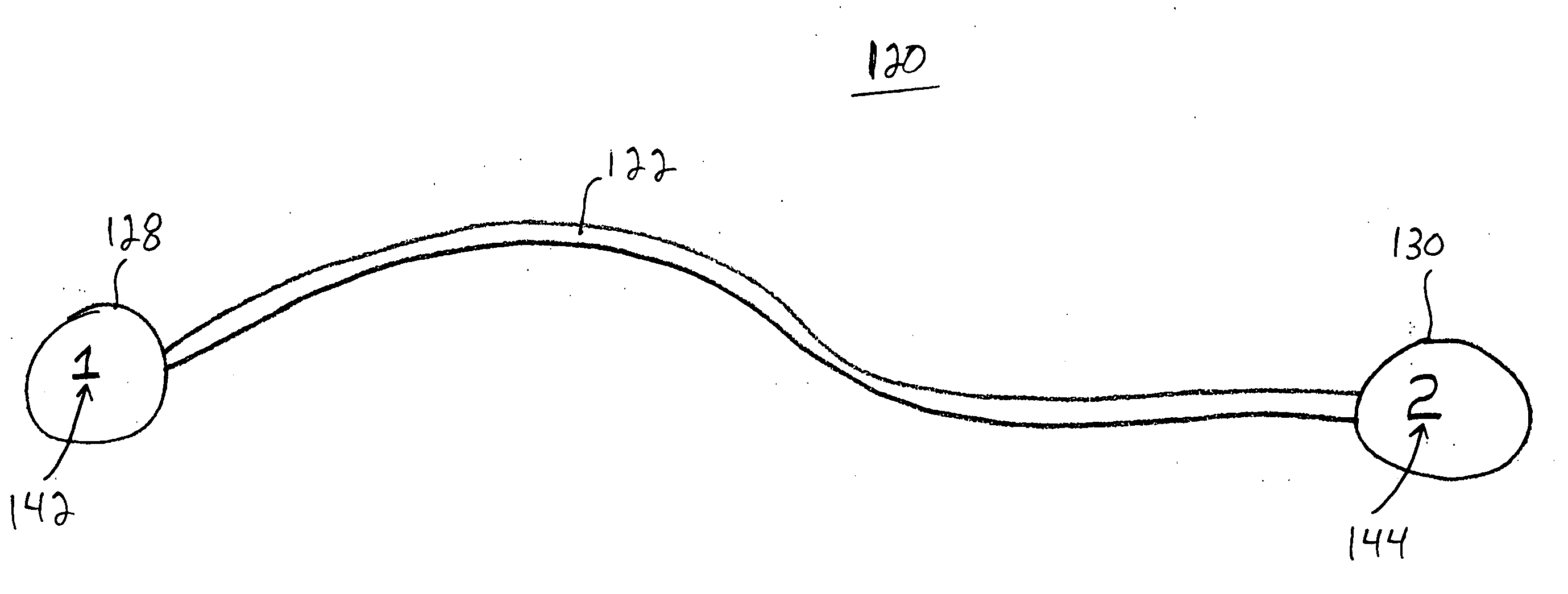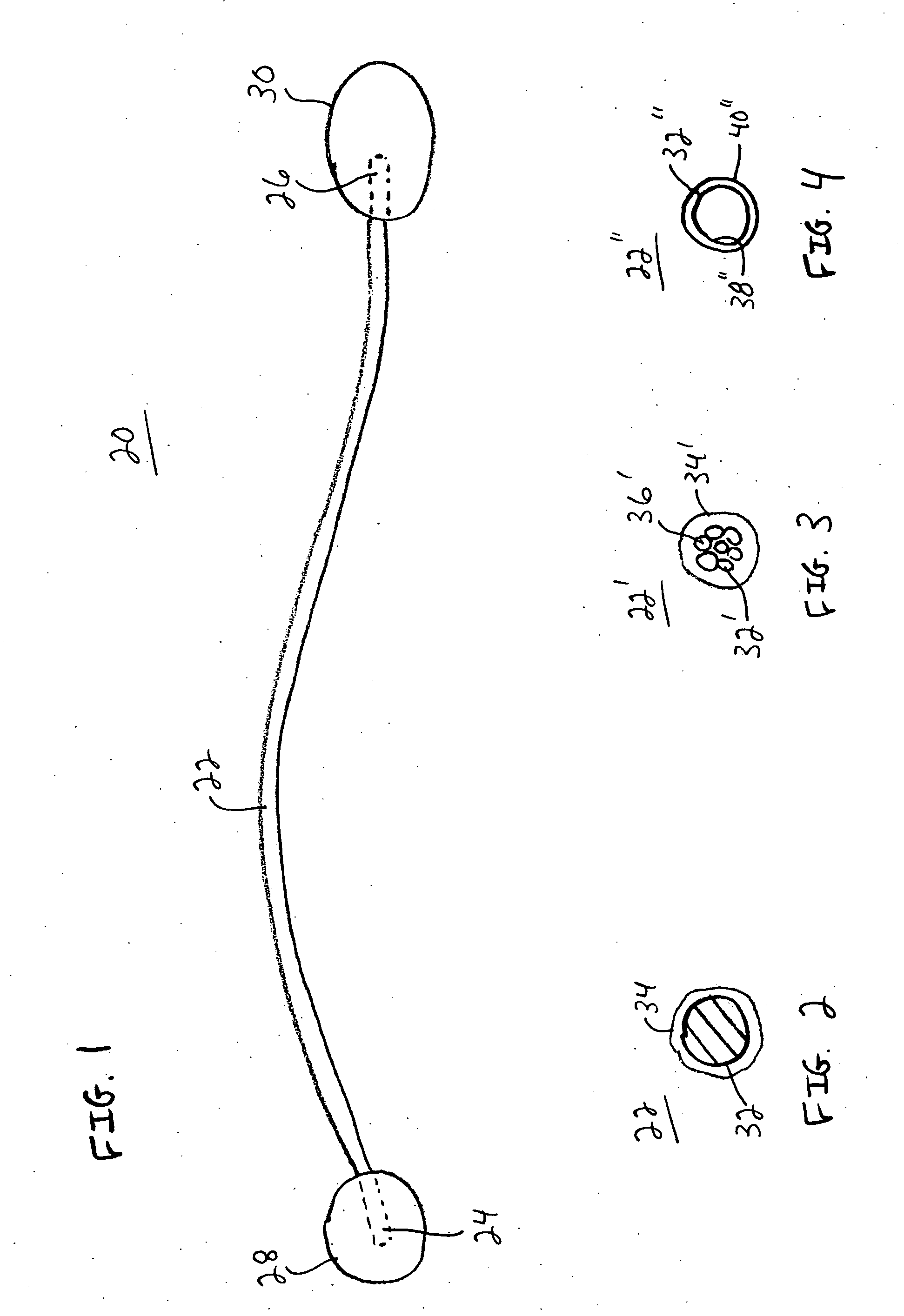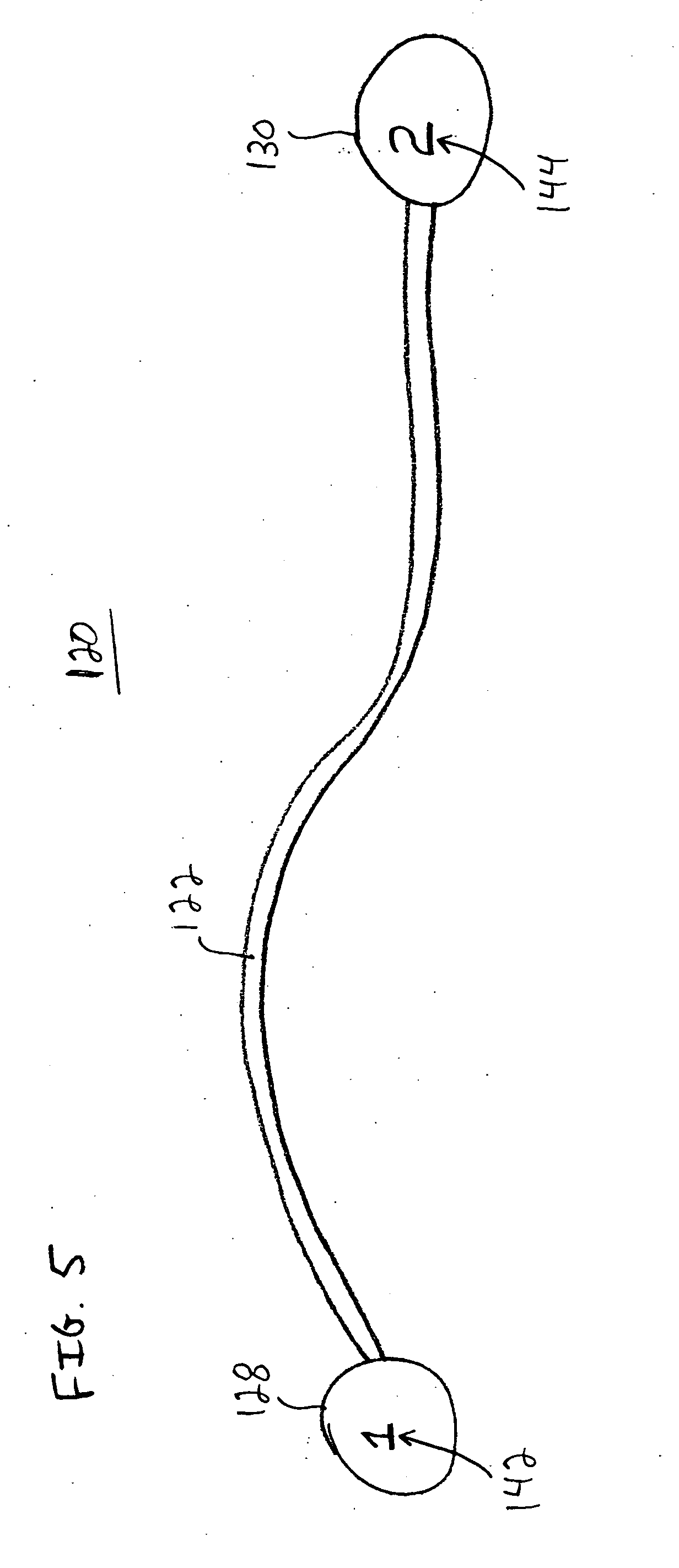[0022] Performing the above-described alternating bilateral
repetitive motion will improve a participant's bilateral dexterity and hand-eye coordination skills. Although the present invention is not limited by any particular theory of operation, it is believed that dexterity and coordination will improve because both hands are constantly involved with each other and are constantly switching roles. As a result, a participant is not able to favor one side over the other, which forces the participant to develop both sides equally. This forced bilateral activity is crucial to developing true ambidexterity and encourages balanced bilateral usage of both hemispheres of the brain for controlling
body movement. Although the hand holding one of the balls (the control hand) tends to influence the flight of the ball in motion, the snapping action of the elastic cord and ball tends to create a random trajectory of the ball in motion that is difficult to control, which makes the exercise especially useful for hand-eye coordination. Another
advantage of such activity is that the participant is able to engage in many more repetitions per
unit of time than is possible with other hand-eye coordination devices and techniques. For instance, if a participant using the present device while performing certain techniques and is unable to catch the ball, he / she can immediately engage in another attempt without having to pick balls up off the floor or chase the balls around the room. Such a rapid reinstitution of an exercise
regimen is not possible when juggling or exercising in the manner disclosed in the above-mentioned '254 patent. Another
advantage of the present invention is that the participant may vary the speed at which the free ball moves through the air from very slow to extremely fast. The participant may also vary the planes of movement in which the balls travel which is very useful for spatial awareness training. This provides an improvement over juggling, which is predominantly performed with the ball(s) moving in planes that are generally vertical to the ground. Yet another
advantage is that the device and method of the present invention may be performed anywhere, on any surface, without requiring a large monetary investment in equipment and without requiring the assistance of a coach or partner.
[0023] In preferred embodiments in which a first ball is dropped from a first hand and the second ball is caught with the first hand, the action of dropping the first ball before catching the second ball traveling toward the participant tends to create an anchoring effect for the device. As a result, if the participant is unable to catch the second ball, the device tends to drop at the participant's feet, which makes it convenient to pick up the device without having to chase the device around the room or outdoor space. This result also provides a measure of safety, because the dropping ball will often stop the ball traveling toward the participant before hitting the participant.
[0024] In certain preferred embodiments, the bilateral exercises may be simplified during initial training with the device. In this preferred embodiment, the technique involves dropping one ball and using the hand holding onto the other ball to bounce the dropped ball back up. As the free, dropped ball bounces up, the participant drops the ball they are holding and catches the free ball. After this catch, the participant can practice bouncing the ball that is now free up to be caught by the other hand. Again this simplification gets the participant accustomed to bouncing, then dropping and catching with one hand and then bouncing the free ball back up to be caught with the other hand.
[0025] More alternating bilateral patterns involving a snapping or bouncing action of the free ball back to the participant may be performed in various planes of movement including going behind the back, through the legs, etc. However, the two techniques described above provide a
solid foundation that will convey tremendous benefit to most participants. Advanced participants may engage in techniques that involve multiple snapping actions of the bola device, i.e. such that the first hand drops the first ball as the second ball snaps back toward the participant. Instead of catching the incoming second ball, the participant lets the second ball reach its full distance against the elastic cord and then snap back away from the participant. This then causes the first ball to snap back toward the participant who then catches the first ball. Depending upon
skill level, a participant may be able to cause the device to snap back and forth multiple times before catching either ball before the device hits the ground.
[0026] In addition to the above exercises, there are many more simplified techniques useful for beginners and many more advanced exercises for more experienced participants. Participants can benefit substantially from practicing various techniques. It can also be useful to utilize certain techniques as transitional movements between different exercises. The following are examples of simplified techniques that are useful for learning and / or useful as transitional moves that allow a participant to keep moving between exercises.
[0027] The repetitive bounce simply consists of holding a first ball in a first hand while bouncing the second ball repetitively up and down. The user attempts to control the bounce of the second ball with the first hand holding the first ball. This is useful as a technique to learn control for more advanced moves like the reverse juggling move described in this application and is also very useful as a transitional movement.
 Login to View More
Login to View More  Login to View More
Login to View More 


